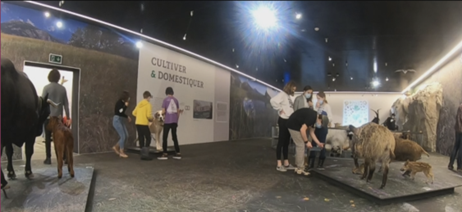Museum Games and Personal Epistemology: A Study on Students’ Critical Thinking with a Mixed Reality Game
DOI:
https://doi.org/10.17083/ijsg.v10i4.695Keywords:
Students’ Personal Epistemology, Game-based Learning, Museum School Visits, Player experience, Critical thinking, Thematic AnalysisAbstract
This study examines how 12-15-year-old students use information while playing Geome, a mixed reality game intended for museum school visits. Geome presents environmental issues, prompting students and asking them to discern and dismiss misinformation and rumors. The study aims to analyze the students' playful learning experience and their perspective on the game. It focuses on the students' critical thinking, interactions and beliefs about knowledge and knowing, referred to as personal epistemology. Adopting a qualitative approach, the research was conducted across three classes in a museum. A combination of audio, video, and in-game interactions was collected from specific moments during gameplay and analyzed according to epistemological dimensions (Certainty, Simplicity, Source, Justification). Video analysis suggests that when faced with ill-structured problems within a playful scenario, some students are spurred to actively process information and develop critical thinking skills. Meanwhile others remain entrenched in their initial conceptions about the nature of knowledge and the act of knowing. The study discusses how the game's characteristics shape students' personal epistemology. Overall, this research demonstrates that games in museum contexts have the potential to promote active learning and critical thinking in some students, when confronted with complex or ill-structured problems.

Downloads
Published
Issue
Section
License
Copyright (c) 2023 Simon Morard, Eric Sanchez, Catherine Bonnat

This work is licensed under a Creative Commons Attribution-NonCommercial-NoDerivatives 4.0 International License.
IJSG copyright information is provided here.